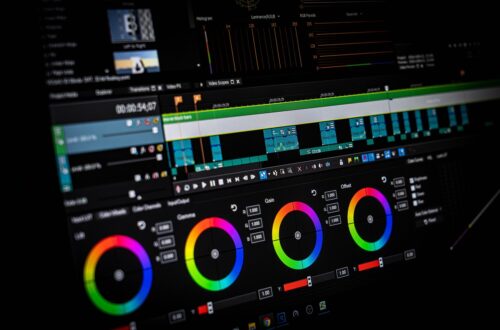
Designing for Social Media: Tips for Eye-Catching Visuals
Social media platforms are a primary venue for brands to engage with their audience. Creating eye-catching visuals is crucial for capturing attention and driving engagement on these platforms. Whether you’re a seasoned designer or a novice, these tips will help you craft compelling visuals that stand out in the crowded social media landscape.
1. Understand Platform Specifications
Each social media platform has its own specifications for image dimensions and formats. Knowing these requirements is the first step in creating effective visuals. Here are the optimal sizes for some popular platforms:
- Facebook: 1200 x 630 pixels for shared images
- Instagram: 1080 x 1080 pixels for square posts, 1080 x 1350 pixels for vertical posts
- Twitter: 1200 x 675 pixels for shared images
- LinkedIn: 1200 x 628 pixels for shared images
- Pinterest: 1000 x 1500 pixels for pins
Ensure your visuals are optimized for each platform to avoid pixelation and cropping issues.
2. Focus on Simplicity and Clarity
Social media users scroll through their feeds quickly. Simple and clear designs are more likely to grab their attention. Avoid clutter and focus on one main idea or message per visual. Use bold, easy-to-read fonts and high-contrast colors to ensure your message is conveyed effectively, even at a glance.
3. Use High-Quality Images and Graphics
Blurry or pixelated images can detract from your brand’s professionalism. Always use high-resolution images and graphics. Stock photo websites like Unsplash, Pexels, and Shutterstock offer a vast array of high-quality visuals. Additionally, tools like Canva and Adobe Spark provide templates and design elements that can enhance your visuals.
4. Maintain Consistent Branding
Consistency in branding helps reinforce brand identity and makes your content instantly recognizable. Use your brand’s color palette, fonts, and logo consistently across all visuals. This not only reinforces brand recognition but also creates a cohesive look that resonates with your audience.
5. Leverage Contrast and Color
Color plays a vital role in catching the eye and evoking emotions. Use contrasting colors to make your visuals pop. For instance, pair dark text with a light background and vice versa. Additionally, consider the psychological effects of colors; for example, blue can evoke trust and calmness, while red can evoke excitement and urgency.
6. Incorporate Text Strategically
Text can enhance your visual content but should be used sparingly. Keep text concise and ensure it supports the visual message rather than overpowering it. Highlight key points with bold or different colored text to make them stand out. Utilize tools like Canva or Photoshop to experiment with different typography styles and layouts.
7. Embrace Negative Space
Negative space, or the empty space around elements, helps your design breathe and prevents it from looking cluttered. It can draw attention to the focal point of your visual and make it more aesthetically pleasing. Don’t be afraid to leave areas of your design blank; it can enhance the overall impact.
8. Use Animations and GIFs
Animated visuals and GIFs are particularly effective at grabbing attention and increasing engagement. Tools like Adobe After Effects, Giphy, and Crello can help you create simple animations that add a dynamic element to your posts. Ensure the animations are relevant to your message and don’t overwhelm the viewer.
9. Test Different Formats
Different formats may perform better depending on your audience and platform. Experiment with various types of content, such as images, videos, carousels, and infographics, to see what resonates most with your audience. Use the insights provided by social media analytics to refine your approach and focus on formats that drive the most engagement.
10. Stay Updated with Trends
Social media trends evolve rapidly. Stay updated with the latest design trends to keep your content fresh and relevant. Follow design blogs, social media influencers, and industry publications to stay inspired and informed about new techniques and styles.
Conclusion
Designing for social media requires a blend of creativity, technical skill, and strategic thinking. By understanding platform specifications, focusing on simplicity, using high-quality images, maintaining consistent branding, leveraging contrast, incorporating text strategically, embracing negative space, using animations, testing different formats, and staying updated with trends, you can create eye-catching visuals that enhance your social media presence and engage your audience effectively.
Remember, the key to successful social media design is to keep experimenting and learning. Stay curious, and don’t hesitate to push the boundaries of your creativity. Your next viral post could be just around the corner.





